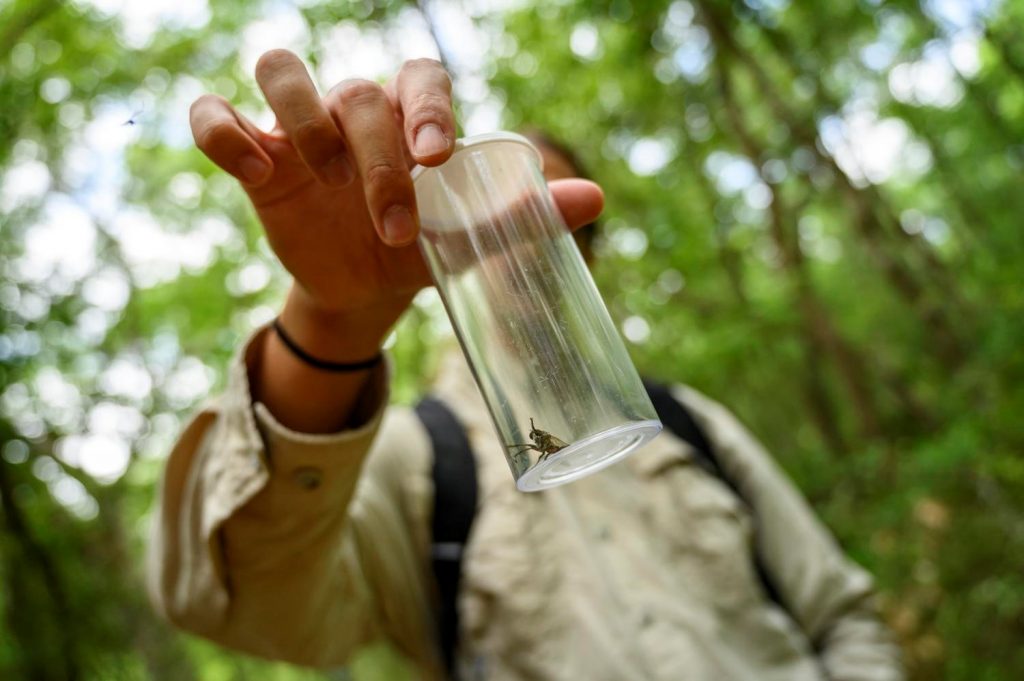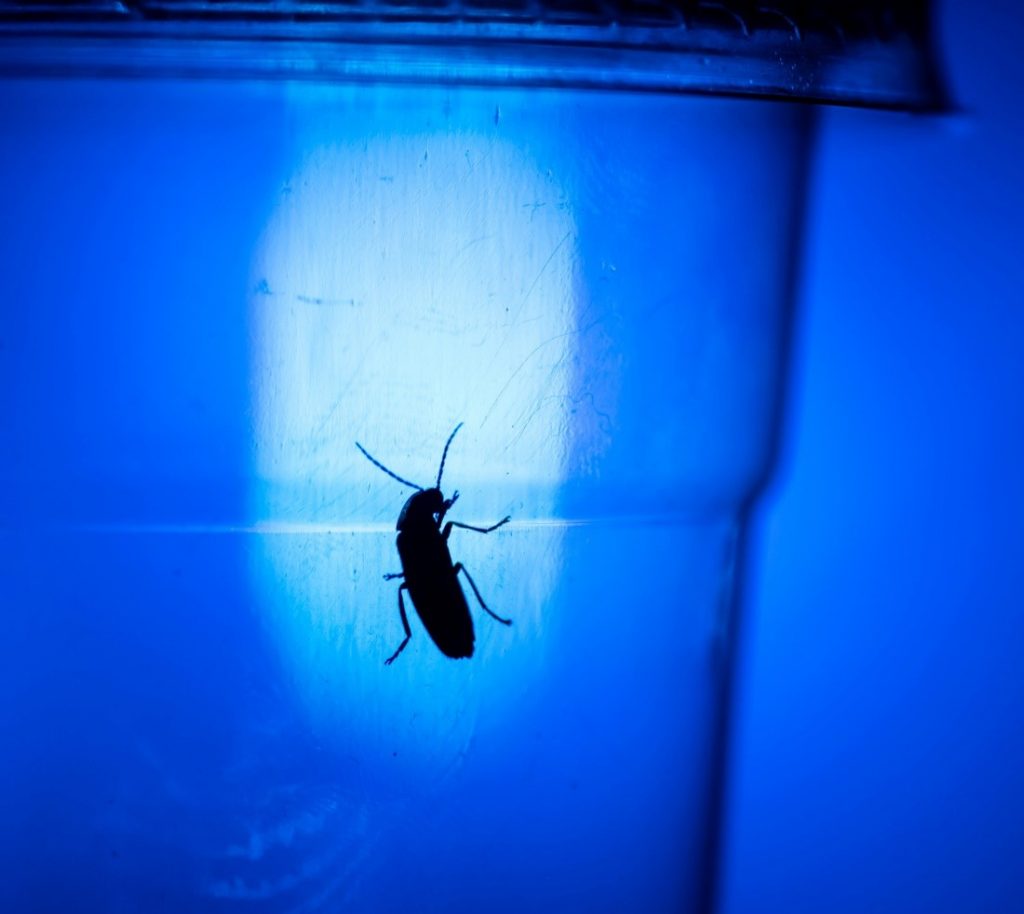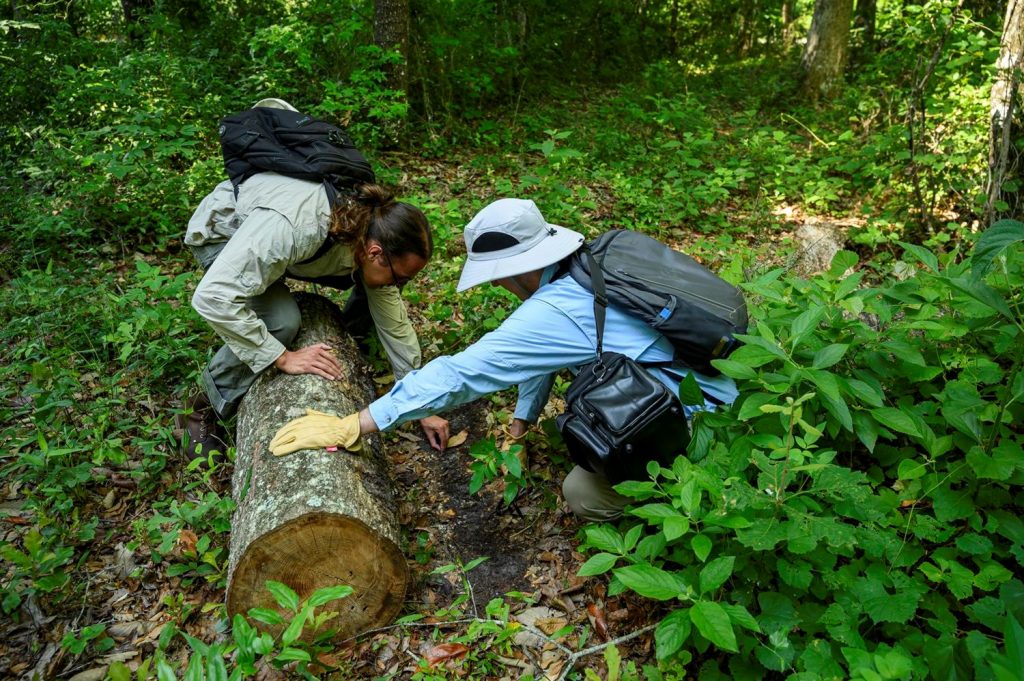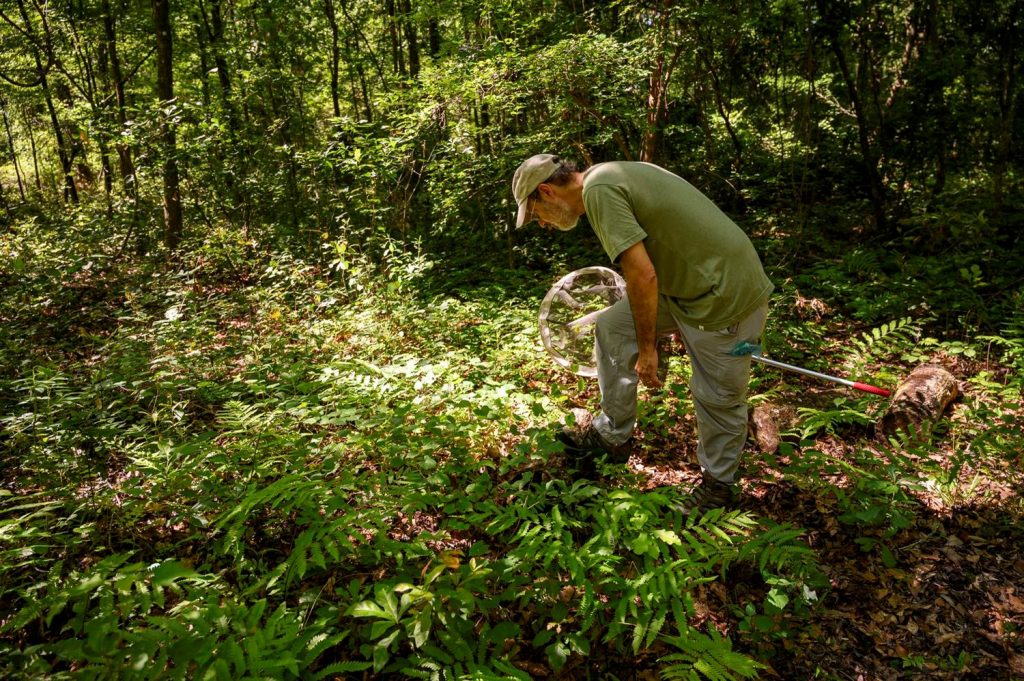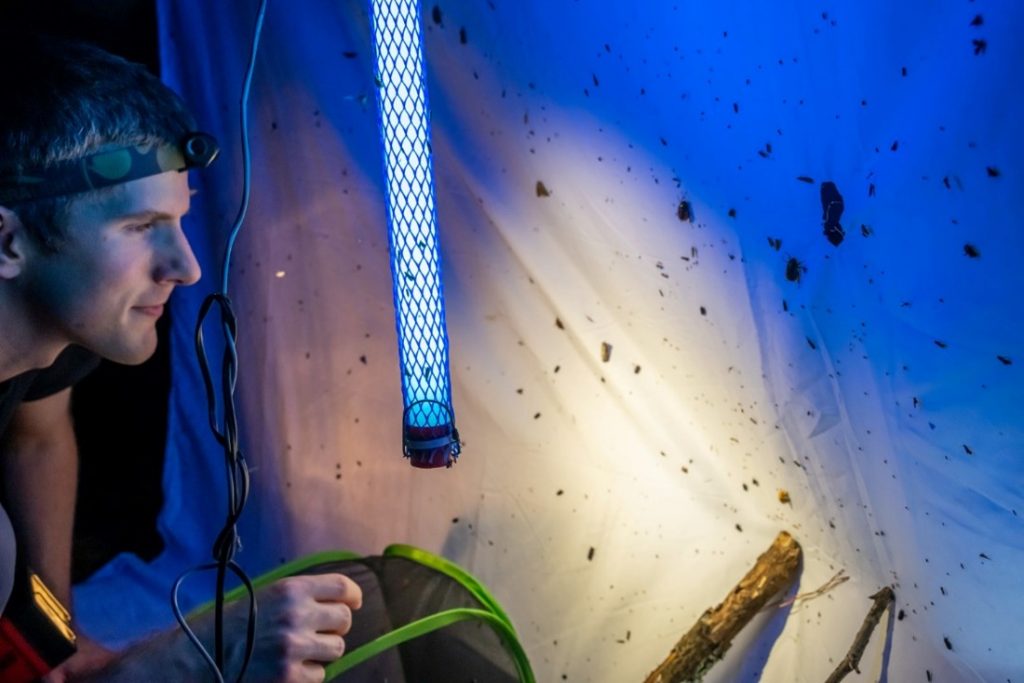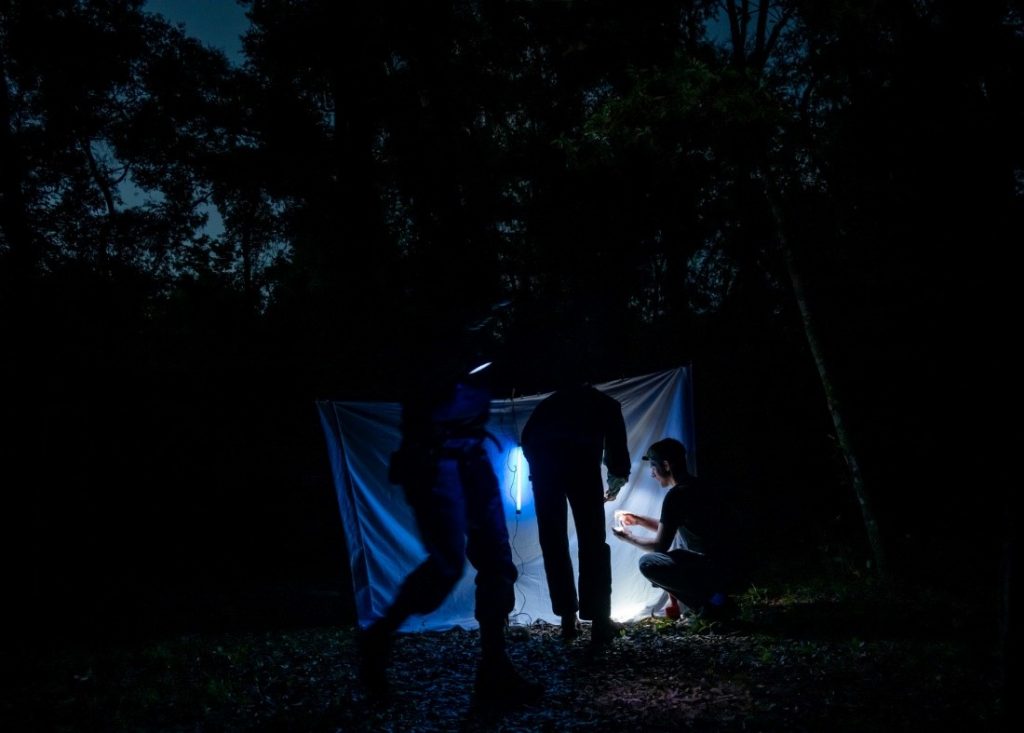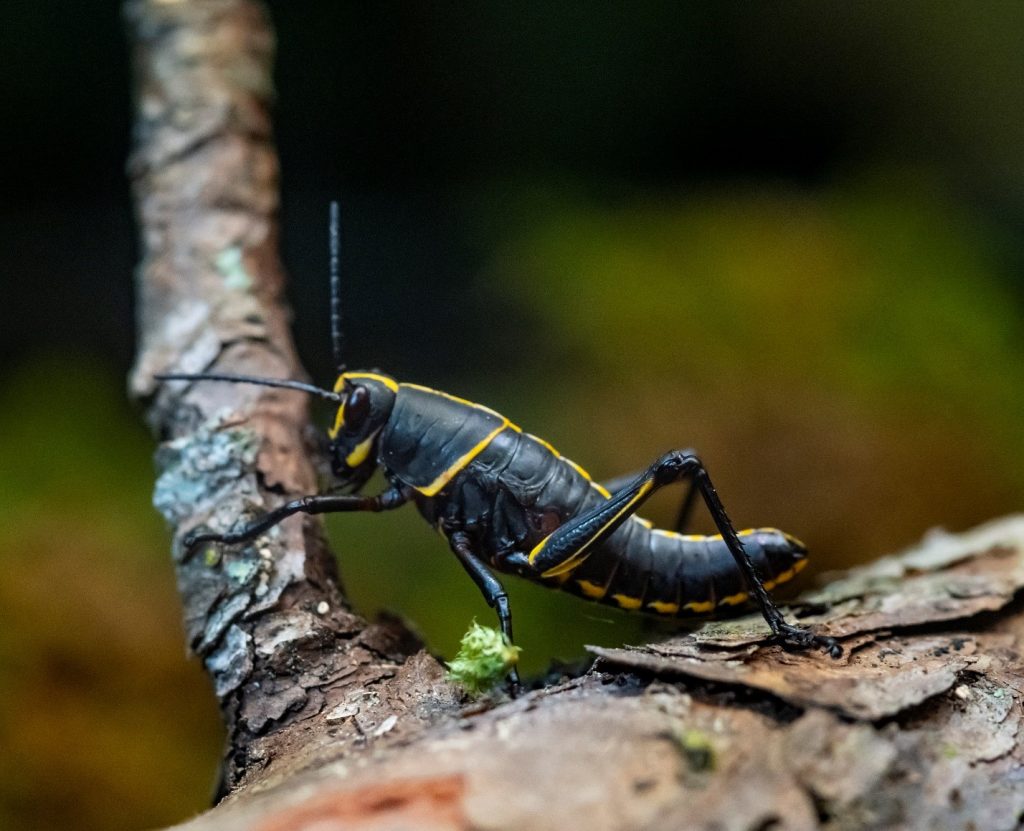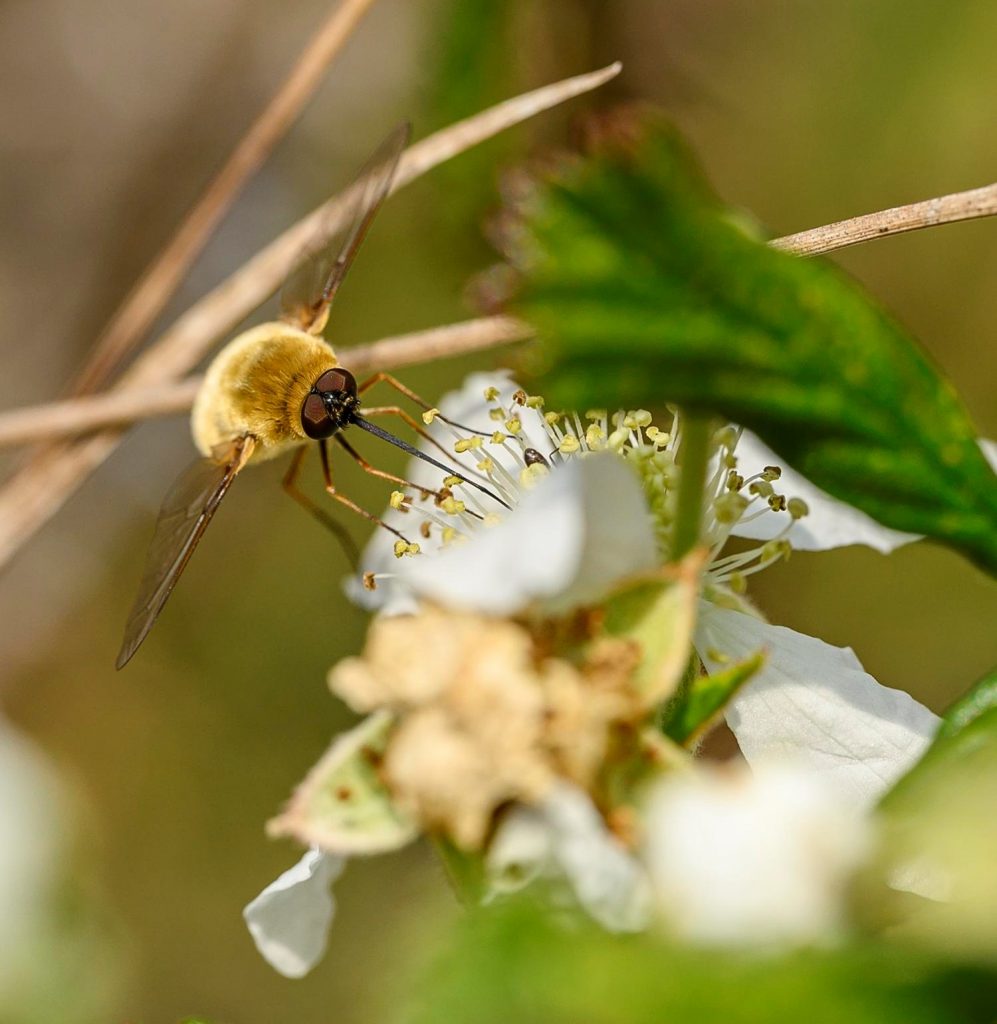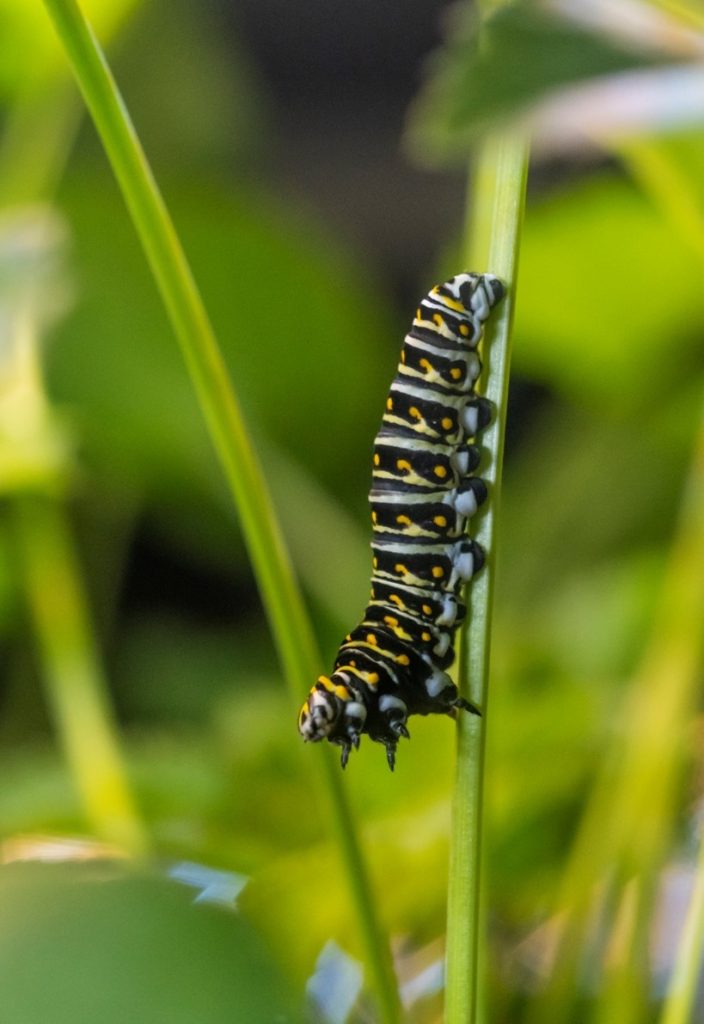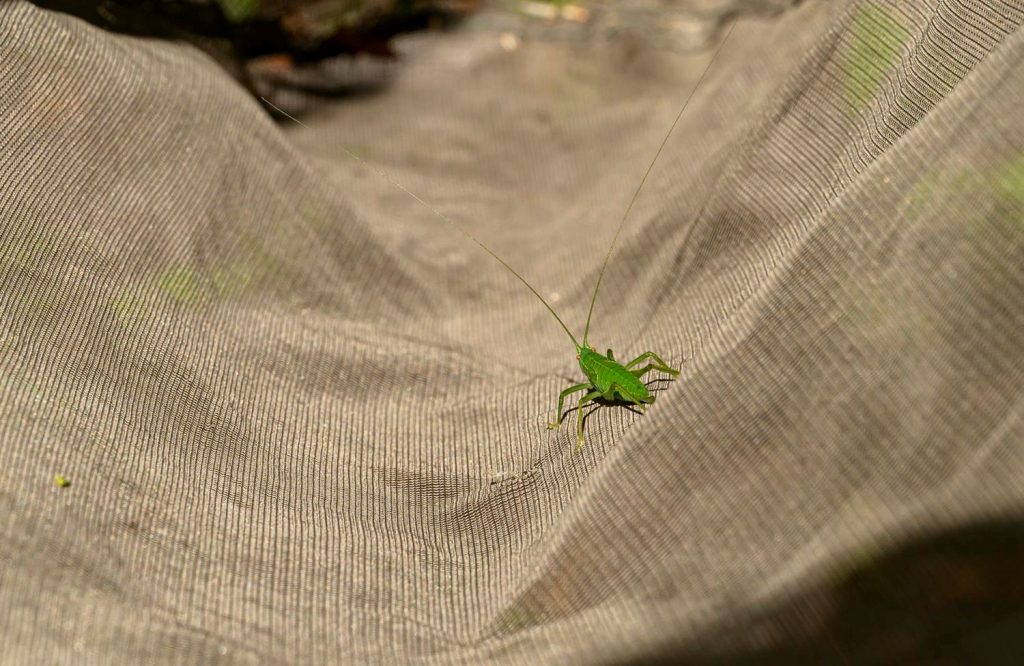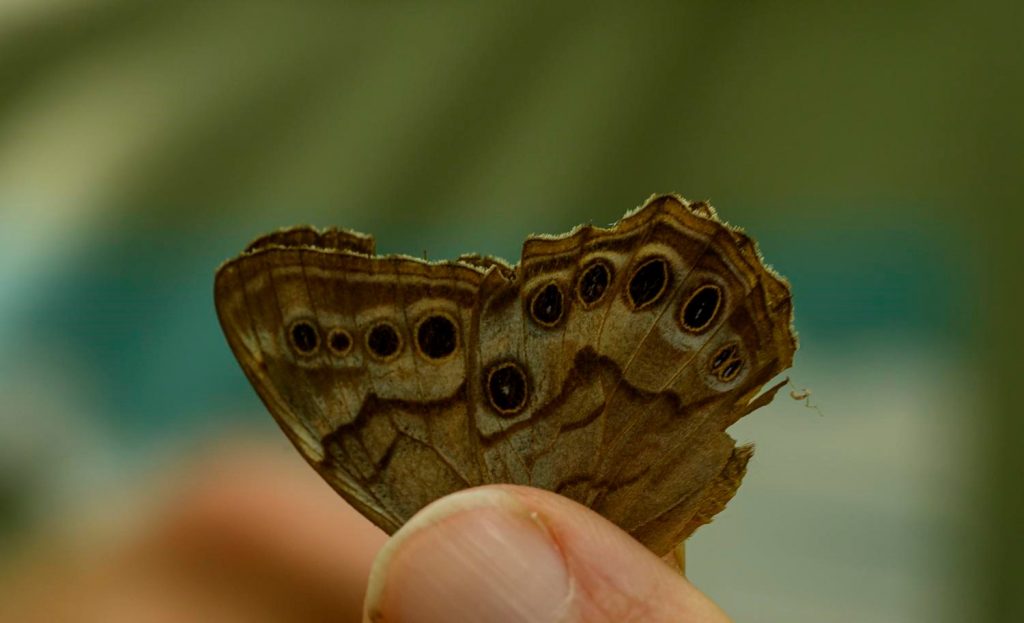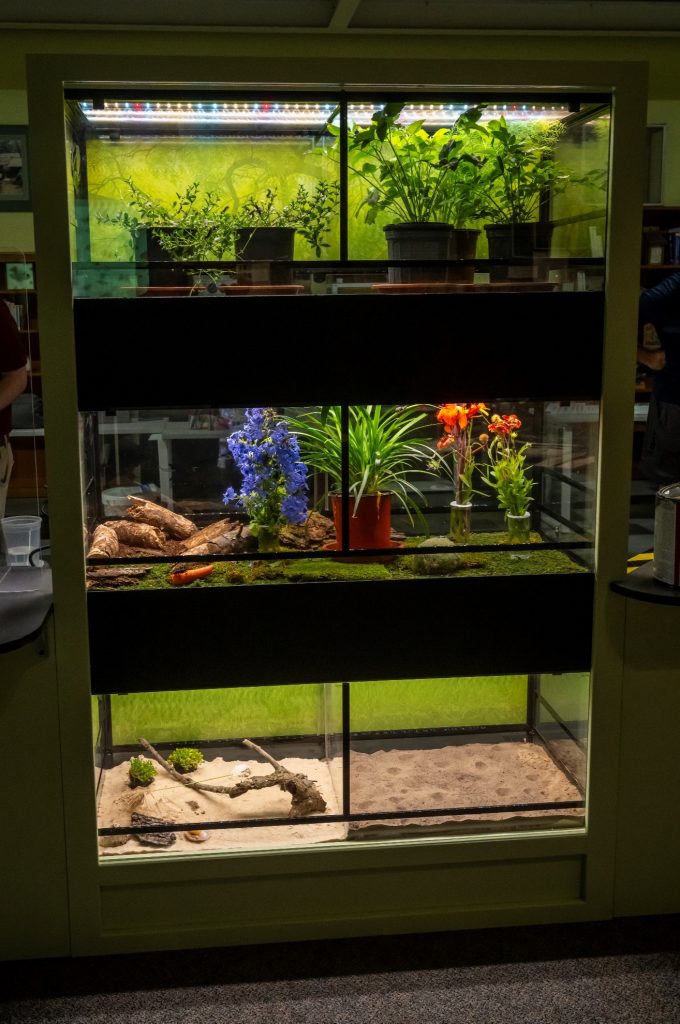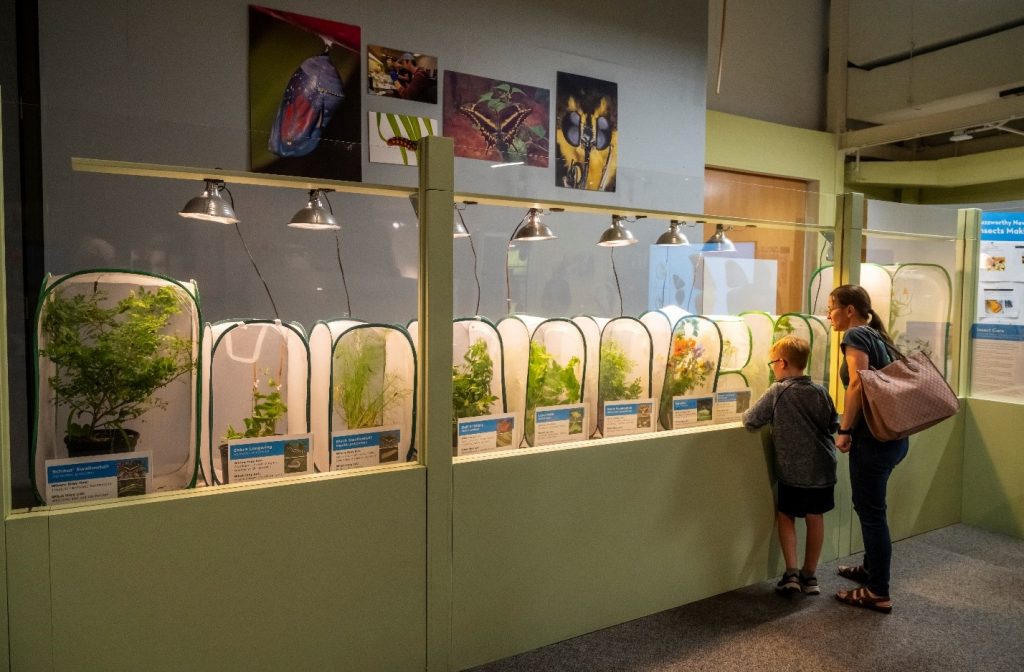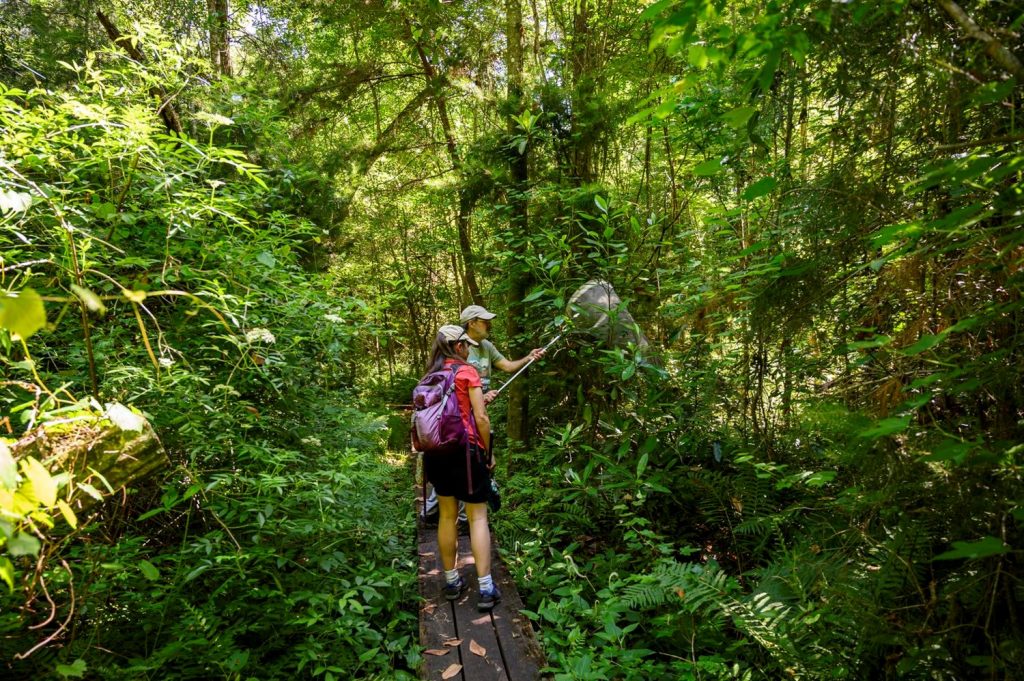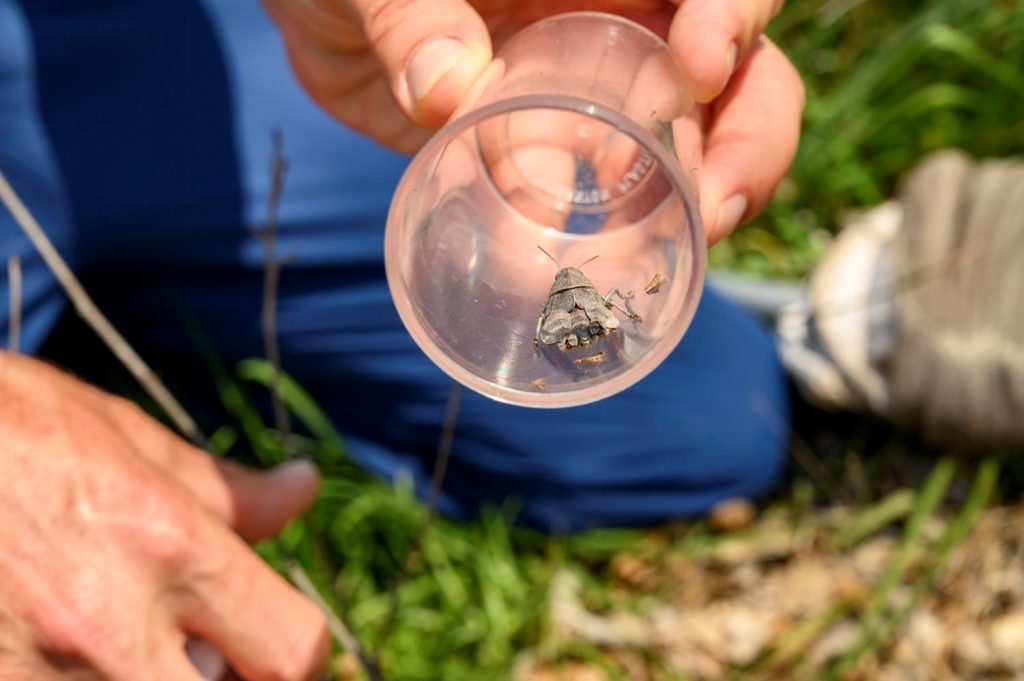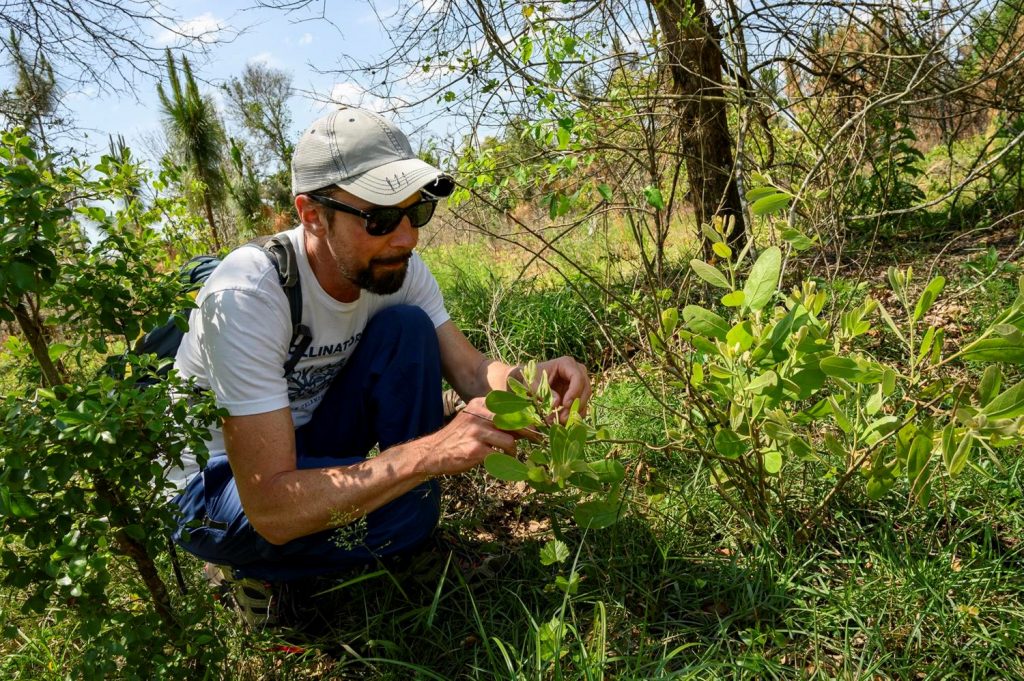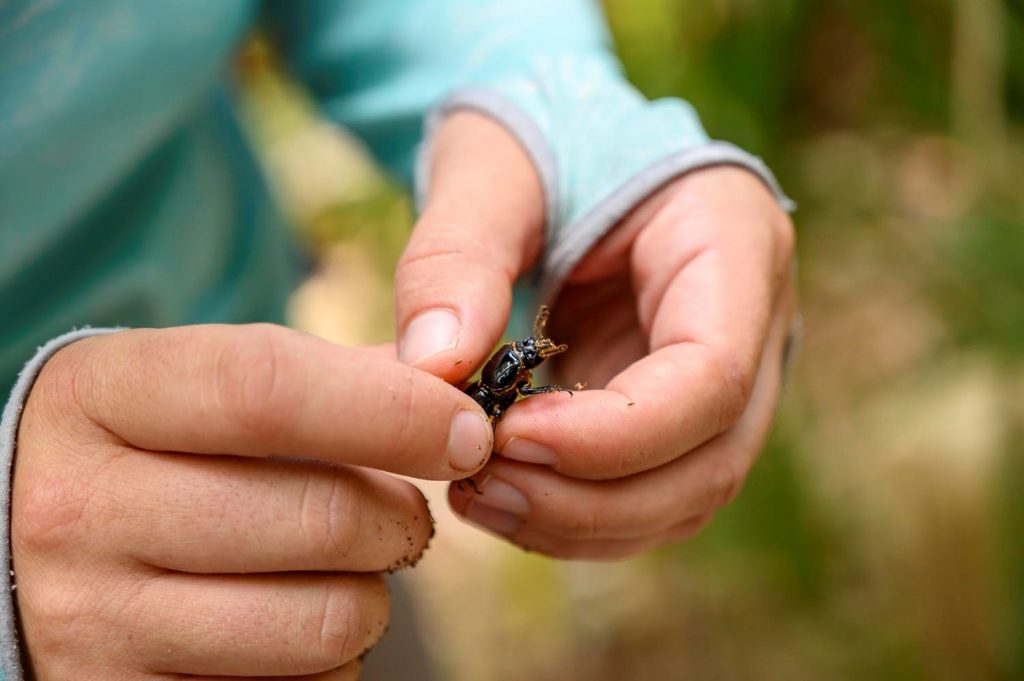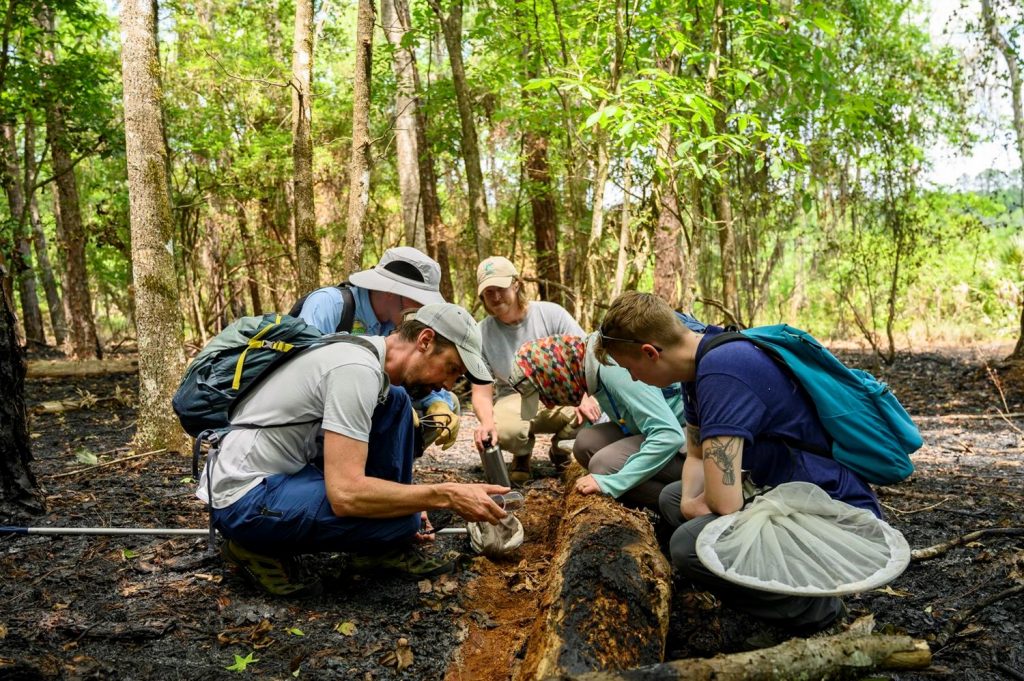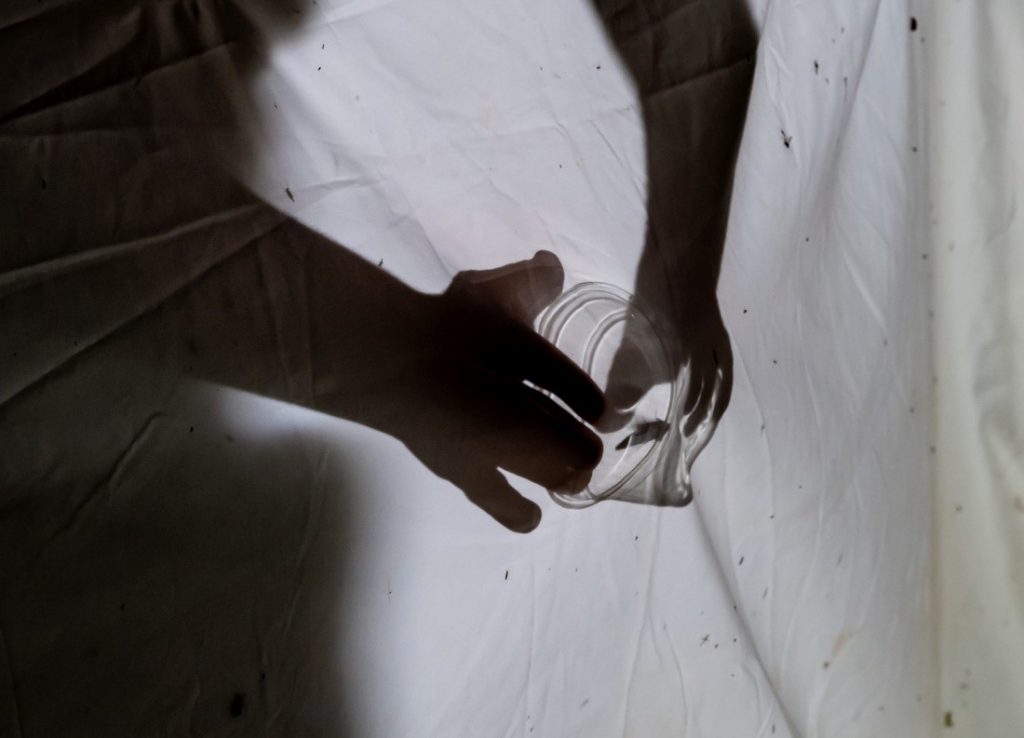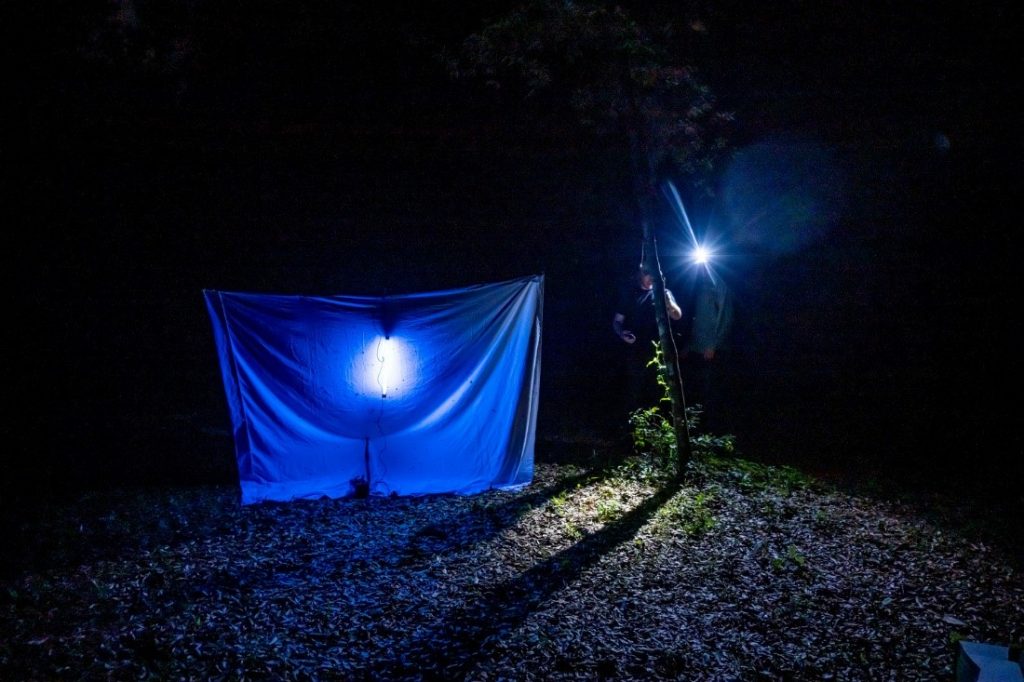On May 25, 2024, the Florida Museum of Natural History’s newest exhibit, Science Up Close: Incredible Insects was unveiled to the public. This exciting exhibit gives attendees the opportunity to encounter remarkable bug species and converse with entomologists. Visitors can also view an extensive collection of live creatures in a “bug zoo,” and learn about the fascinating features they have to offer.
To make this exhibit possible, University of Florida scientists spent hours out in the field working on a unique and thrilling task: capturing bugs from the wild! So far, the team has completed around 10 insect collection trips, and they will continue to collect insects throughout the duration of the exhibit.
What does insect collection entail?
On an insect collection trip, scientists gather with butterfly nets, vials, a permit from Alachua Conservation Trust allowing them to collect on ACT properties, and a wish list of desired bugs in hand. The group then travels to one of Alachua County’s picturesque nature preserves to look through plants, scan the ground, and hike for miles in search of as many fascinating creatures as possible.
The collection events are divided into daytime collecting trips and nighttime collecting trips. Daytime trips are ideal for finding caterpillars, butterflies, mantises and other insects that are not active at night. Nighttime trips allow scientists to collect critters that are attracted to light. On these moonlit excursions, scientists point a blacklight towards a hanging white sheet and are met with species enthralled by their glow.
What insect features are best?
The scientists are primarily searching for critters with two features on these bug hunting trips: aesthetic appeal and a long lifespan. Fan favorites like butterflies, mantises and katydids are high on the most wanted list, as they are insects that are charming to look at so are essential for capturing the attention of visitors.
“We’re really looking for bugs that are charismatic, active, flashy and that have character. In other words, bugs that most people can easily get excited about,” said Matthew Standridge, a conservation technician at the McGuire Center for Lepidoptera and Biodiversity.
Additionally, captured bugs should have long lifespans so they can thrive as long as possible in the exhibit’s zoo.
Why are insects special?
Kristin Rossetti, conservation coordinator at the McGuire Center, and organizer of the insect collection events, hopes that visiting Incredible Insects will open people’s eyes to the wonderful and important role that bugs play in the natural world. Insects make up around 80% of animal life on earth and provide an extensive range of important services such as for pollinating food crops, decomposing waste, pest control and more.
“The diversity of insect life on our planet is just so incredible, astonishing and complex,” Rossetti said. “Hopefully visitors can leave with their eyes open to how fascinating and lovely these creatures are, especially when you look closely.”
While living in the bug zoo, the insects will be kept in terrarium style displays, complete with plentiful food resources and plant life mimicking the bugs’ natural habitats. With no predators around, they are expected to thrive and will likely live longer than they would in the wild.
To see the insects that our scientists have worked so diligently to collect, visit Science Up Close: Incredible Insects, open May 25 through Sept. 2, 2024, at the Florida Museum of Natural History!
The Florida Museum of Natural History obtained special permission from Alachua Conservation Trust to collect insects using sustainable practices on select ACT properties. Insect collecting should not be executed without permission from the proper authorities.
